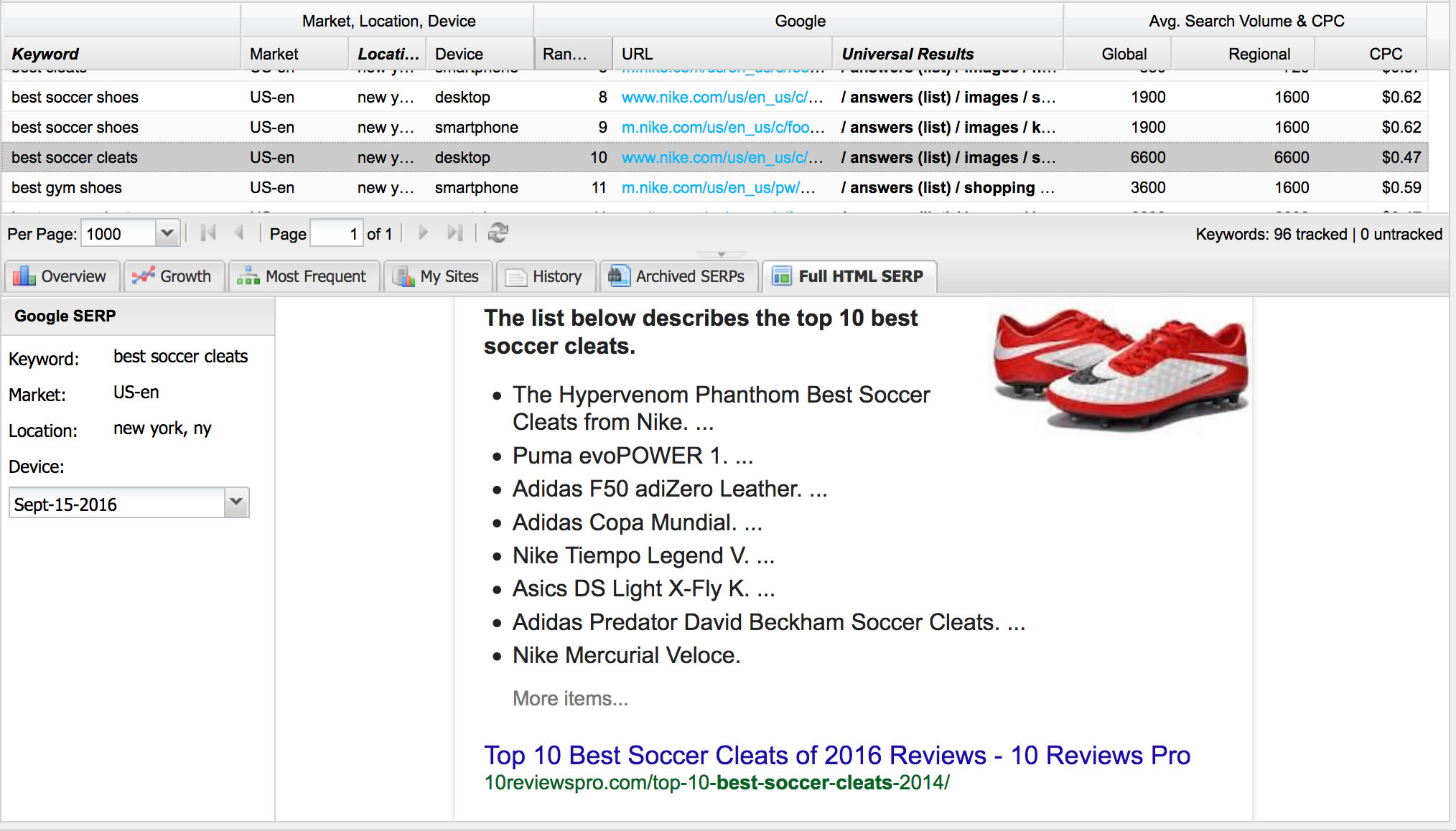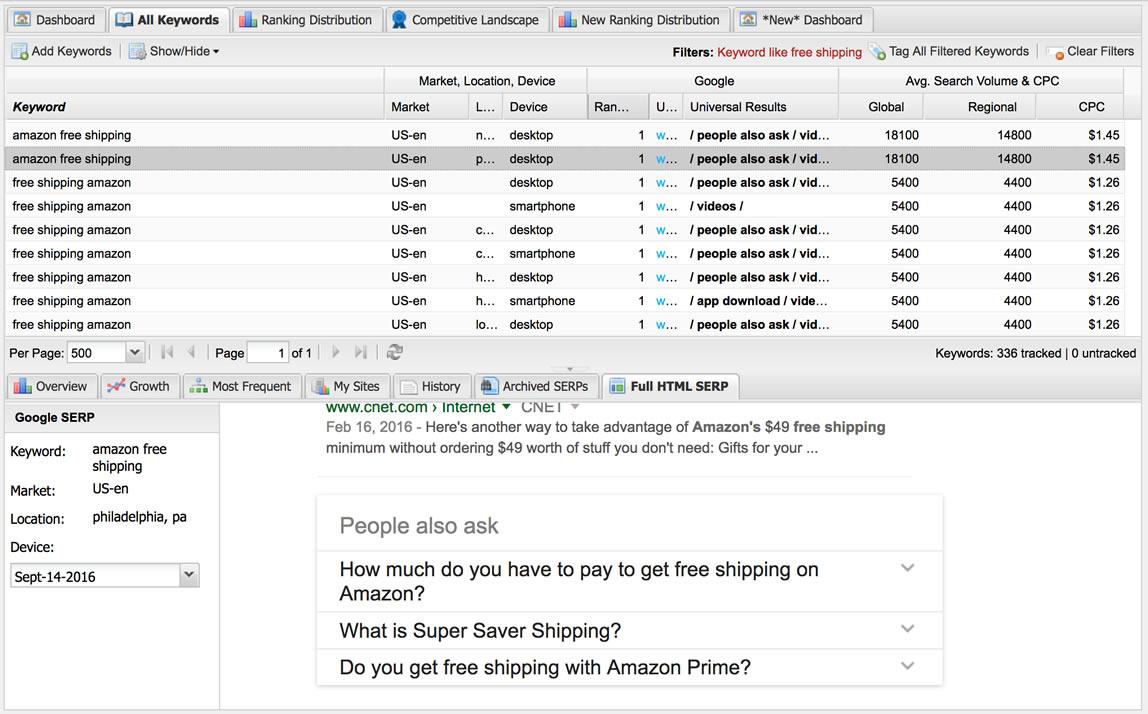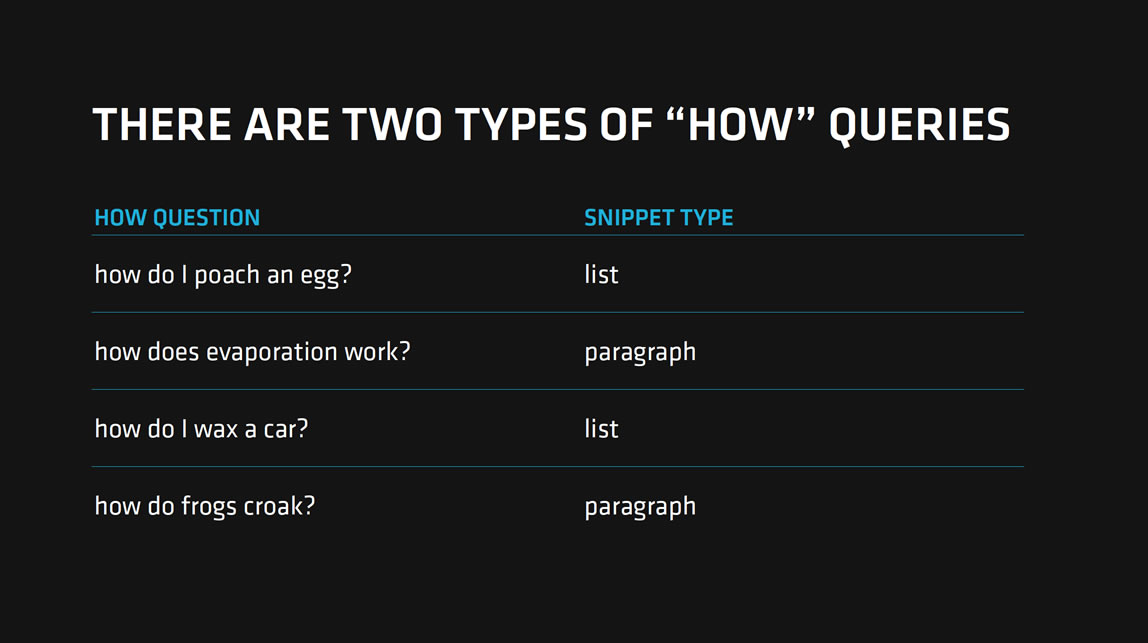Our featured snippet research inspired us to launch even more tracking capabilities in STAT.
Back in January 2016, we took a good hard look at one million high-CPC SERPs to see what they could tell us about featured snippets (called answers in STAT), and summed it all up in our whitepaper, How to get more featured snippets.
But as card-carrying Data Nerds, we weren’t content to simply leave it at that, so six months later we dove back into the world of featured snippets and re-ran the data to see what’s changed.
After sifting through mountains of data times two, our CEO and founder of STAT, Rob Bucci, took the stage at MozCon to present our findings. Here are just a few key takeaways.
Snippets are on the rise and more valuable than ever
In January, we found that nine percent of SERPs returned a featured snippet. As of July, that number jumped to a whopping 15 percent. And not only did we see nearly 70 percent more snippets, the aggregate CPC for these keywords went from 1.75 million in January to three million in July.
That’s a pretty darn significant increase for both — and tells us that featured snippets are here to stay.
Onwards and upwards
Featured snippets are on the rise, and they’re here to stay.
Your opinion matters more than ever
Digging into all those new featured snippets, we saw something unexpected — that subjective answers are now in the running to earn snippets.
For example, when a query used subjective words like “best” or “review” in January, we saw a minuscule number of featured snippets. As for how significant this was, the word “best” appeared 20 thousand times in our data set and nary a snippet was triggered. It was almost like a stop word for snippets.
But this all changed in July. The word “best” went from zero to hero, triggering snippets on 28 percent of SERPs. And snippets produced from subjective queries as a whole went from practically non-existent to an impressive 18 percent.
So, if you’re an SEO in an industry that doesn’t deal with hard and fast answers, it’s time to get those opinion pieces featured snippet-ready.
Look who decided to join the party.
“best” keywords are now the belle of the snippet ball.
The “People also ask” box is an excellent resource for content ideas
A surprising ally in the featured snippets race is the “People also ask” box. Not only are PAAs also on the rise on featured snippet SERPs, but they deliver a pretty stellar content hack.
PAA results are also on the rise
Just like featured snippets, we’ve seen more and more PAA results over the past six months.
Google is showing their hand by telling you what kind of content they dig for similar questions. Like runners-up in a beauty contest, you can use them as inspiration for your own featured snippet content.
Here we see the PAA for the keyword [free shipping on amazon]. Amazon should consider creating well-structured, easy-to-parse answers for these additional questions to potentially steal away the featured snippet that Fortune.com earned for the first PAA question.
Look to the PAAs
What else are people asking? Perhaps it’s time to write content around those questions.
Pay attention to both snippet format and query intent
Looking deeper into the different types of featured snippets — paragraph, list, and table — we saw an important relationship between them and the kinds of queries they answer.
For example, there’s been a solid increase of list and table snippets between January and July in our data set. This suggests that they provide a better user experience for certain queries. By returning a handy list or table, a searcher can find their answer quickly instead of having to dig through a body of text.
Lists and tables are catching up.
Paragraphs are a popular result type, but tables and lists are coming into their own.
It’s also important to remember that Google has gotten scary good at understanding the intent behind queries. So, while optimizing for “what” or “how” queries is a good call, a snippet won’t always appear for each, and when it does, it won’t always have the same format.
In other words, you need to consider the question you’re trying to answer, and the format that will best convey that information.
Keep the query in mind
Different queries will return different formats of featured snippets.
Track PAAs and paragraph, list, and table snippets for insights
The best way to understand the snippets in your query space is to research them. Does a “how” question require a step-by-step list or a paragraph response? Is there a weak snippet you can steal with a better answer?
Since the structure of your on-site content impacts snippets, tracking the snippets appearing on your SERPs allows you to base formatting decisions on what you see, earning you bundles of beautiful snippets.
And because we think that featured snippets are such an amazing opportunity for SEOs, we’ve gone and added the ability to track all the colours of the snippet rainbow (paragraph, list, table), as well as PAAs, in STAT.
Wrapping it up with a nice little bow
Snippets are on the rise, and if you’re looking for answers, you’ve come to the right place. By going beyond rank and tracking every single SERP feature in STAT, you’ll get a deeper view into what’s happening in your space, allowing you to be more strategic with your SEO.
Not using STAT yet? Drop us a line and we’d be happy to set up a custom demo to show you what you’re missing.








